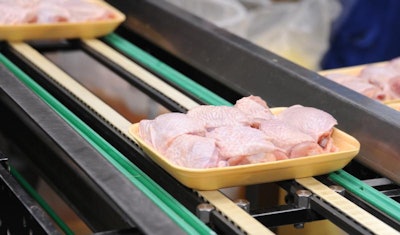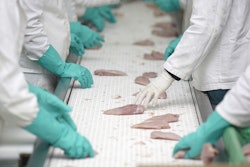
Hyperspectral imaging technology, combined with artificial intelligence and machine learning, could help identify meat quality defects like woody breast during poultry processing.
“Woody breast has been such an issue in the industry, but a lot of the work is done on two of extremes. One is in the laboratory in universities, and one is the actual production side and sometimes those two things don’t overlap,” said Olga Pawluczyk, CEO of P&P Optica.
“We’re trying to build an instrument that allows people to image woody breast and diagnose woody breast on a production level number of chickens.”
Pawluczyk is one of the many experts scheduled to speak during the Poultry Tech Webinar Series, scheduled for November 2, 4, 10, 11, 17, 30 and December 2. This one-of-a-kind series explores innovation technologies from researchers and entrepreneurs that could transform the poultry industry.
This webinar series is proudly sponsored by: Arm & Hammer, Aviagen, Baader, Boehringer Ingelheim, Cargill, Ceva, Chore-Time, Cobb, Evonik, Marel, Phibro Animal Health, Staubli, and Zoetis.
Register for free today and join us for a glimpse at the future of the poultry industry.
From subjective to objective
The assessment of meat quality defects is typically done by hand, a highly subjective process.
“By measuring a lot of samples and by doing significant statistical analysis and looking at multiple sources of chickens in large quantities, we are trying to remove the subjectivity of the grading process,” Pawluczyk explained.
Hyperspectral imaging can provide processors with information about the chemical composition of poultry products, identifying if a chicken breast has true woody breast, no woody breast or even just a little of the meat quality defect.
The technology uses highly specialized cameras that capture an image of each object as it moves down the line. Each pixel in the image displays hundreds of wavelengths along the light spectrum.
Artificial intelligence and machine vision analyze the images – which look like squiggles to the naked eye – to display the precise information about the chemical composition of the poultry product.
What’s coming next
For more on the technologies set to advance the poultry industry, join industry-changing innovators, researchers, entrepreneurs, technology experts, investors and leading poultry producers at the Poultry Tech Webinar Series, scheduled for November 2, 4, 10, 11, 17, 30 and December 2.
During the webinar series, industry experts will preview what’s coming next – from prospective solutions to developing technology – for the poultry industry.
This webinar series is proudly sponsored by: Arm & Hammer, Aviagen, Baader, Boehringer Ingelheim, Cargill, Ceva, Chore-Time, Cobb, Evonik, Marel, Phibro Animal Health, Staubli, and Zoetis.
Visit our website for more details on the webinar series, topics and speakers.
Register for free today and join us for a glimpse at the future of the poultry industry.
Like what you just read? Sign up now for free to receive the Poultry Future Newsletter

















